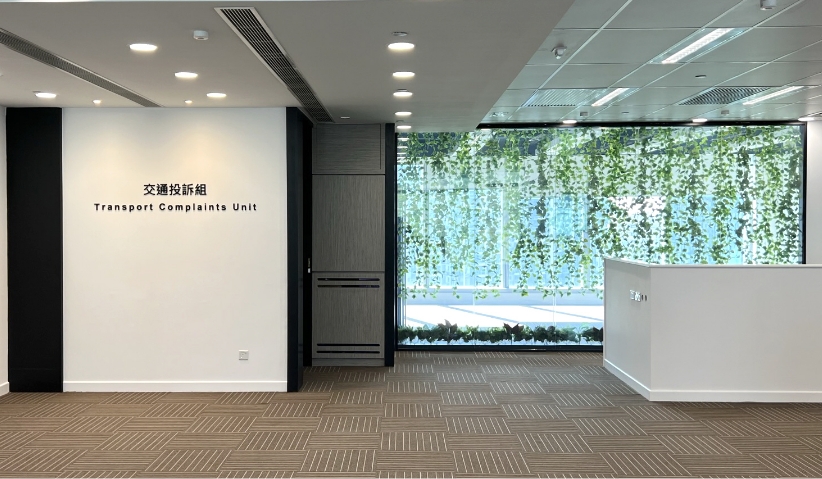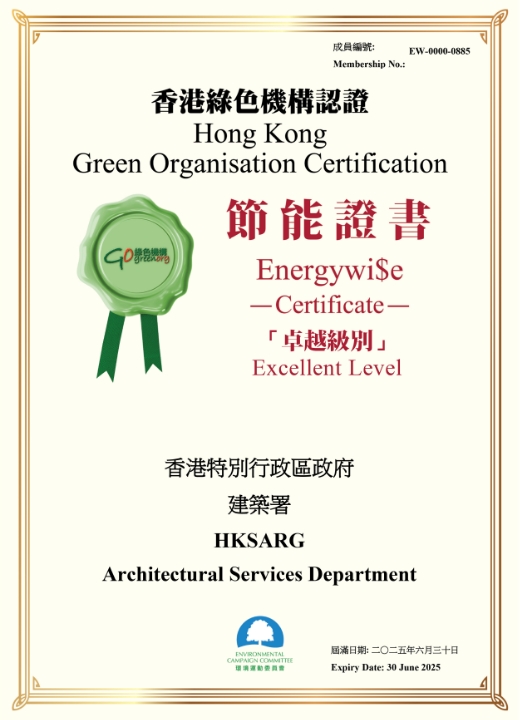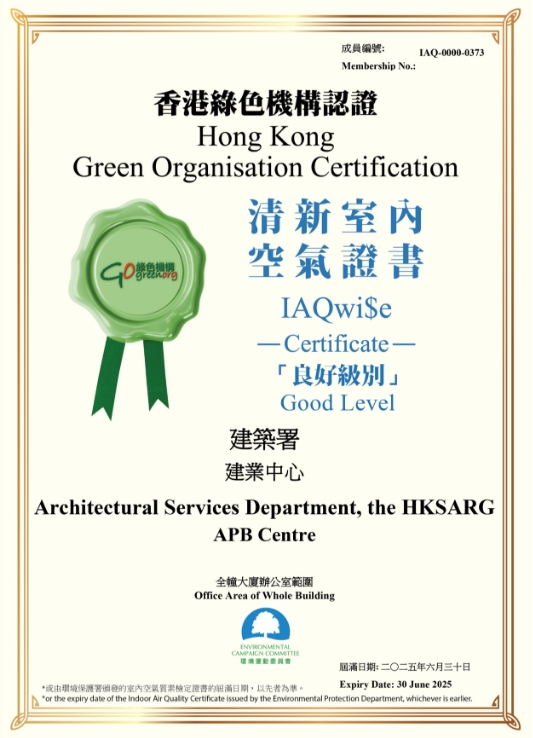Build a Low-Carbon Environment
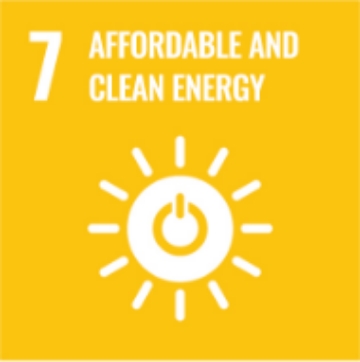



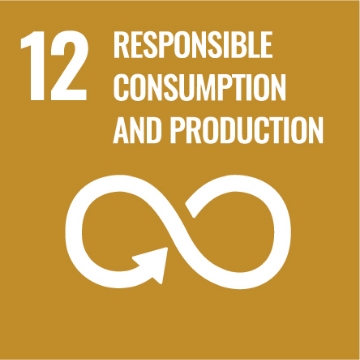

Driving Low-Carbon Transformation with Advanced Technologies
As the key department responsible for the development and maintenance of public facilities in Hong Kong, the ArchSD is committed to leveraging innovative and smart construction technologies, as well as our reach and partnerships to break new grounds in environmental stewardship, and to influence the systemic progress necessary for advancing low-carbon building design, construction and practices.
To enhance the sustainability and environmental performance of our construction projects, we are adopting a performance-based approach that goes beyond statutory requirements. Green and high productivity construction technologies, such as Building Information Modelling (BIM), Modular Integrated Construction (MiC) and Multi-trade integrated Mechanical, Electrical and Plumbing (MiMEP), are extensively used in our projects in close collaboration with industry partners and contractors.
Carbon Neutrality Strategic Framework
To align with Hong Kong’s Climate Action Plan 2050, we are taking a proactive approach to adopting the “3A Strategy”, namely Amplify, Accelerate and Act Together under our Carbon Neutrality Strategy Framework to speed up the progress in decarbonising Hong Kong’s built environment.
3A Strategy


To adopt performance-based approach to go beyond and above statutory requirements and apply green and high productivity construction technologies to maximise decarbonisation performance in projects.

To explore, develop and adopt smart and advanced technologies to accelerate low-carbon transformation in our projects.

To work hand-in-hand with stakeholders to combat future climate challenges and build the carbon neutral future together.
To address the increasing demand in achieving a low-carbon built environment, we will integrate carbon appraisal in our projects and build up capacity with a view to progressing low-carbon building designs. Through the collection, analysis and tracking of carbon performance in projects, a holistic overview of carbon performance can facilitate deep decarbonisation as well as the setting of overarching decarbonisation strategies in Hong Kong’s built environment.
Visit our website to learn more about our Carbon Neutrality Strategic Framework and 3A Strategy.
Sustainable Building Design Strategies
To enhance climate change mitigation and resilience, we have adopted passive and active design approaches as our key strategies for designing sustainable and future-fit buildings as follows.
Passive Design Approaches
Mitigating heat island effect or elevated temperature
Air ventilation around buildings
Daylighting
Natural ventilation
Passive cooling
Reducing heat gain through building envelope
We also strive to optimise a building’s interaction with its local microclimate through careful planning, site orientation and material selection.
Active Design Approaches
Heating, ventilation and air conditioning (HVAC) systems and water-efficient devices
Lighting systems
Renewable energy technologies
Guidebook for Innovative and Smart Technologies
The ArchSD has been pushing the boundaries of technology in promoting a smart and sustainable building ecosystem. With emerging technologies advancing at a rapid pace, we conducted a research study and developed the Guidebook to identify and scale up smart and low-carbon building initiatives as a practical reference tool for implementation in government buildings across multiple stages, and in various building types.
Guidebook for Innovative and Smart Technologies for Design, Construction, Operation and Maintenance of Government Buildings.

The following case studies are exemplary showcases of the ArchSD’s low-carbon and green buildings as well as its application of innovative and smart technologies in design and construction:
Advancing Green Buildings
Pursuing green certification can enhance environmental and sustainability performance. The ArchSD underlines its strategic approach to sustainability by adopting the BEAM Plus New Buildings for new projects. As at the end of 2023, we have obtained BEAM plus (New Buildings) certification for 55 new buildings, BEAM Plus Interiors certification for 5 offices and BEAM Plus Existing Building (Selective Scheme) for 3 buildings.
BEAM Plus-Certified Buildings up to 2023
| Type of Certificates | Rating | Sub-total | |
|---|---|---|---|
| BEAM Plus (New Buildings) Certification* (Versions 1.1, 1.2, 2.0) | Platinum | Gold | |
| 17 | 38 | 55 | |
| BEAM Plus (Interiors) Certification (Version 1.0) | Platinum | ||
| 4 | 4 | ||
| BEAM Plus (Interiors) Certification (Version 2.0 – Non-residential) | 1 | 1 | |
| BEAM Plus Existing Building (Version 2.0 Selective Scheme) Certification | Excellent | Satisfactory | |
| 2 | 1 | 3 | |
*Reference to specific versions of BEAM Certificate: Version 1.1 – BEAM Plus New Buildings, 2010; Version 1.2 – BEAM Plus New Buildings, 2012; and Version 2.0 – BEAM Plus New Buildings, 2019.
Managing our Footprint
We abide by the Quality, Environmental, Anti-bribery, Occupational Health and Safety Policy to deliver our services in an environmentally responsible manner by reducing carbon emissions, increasing energy and resource efficiency and enhancing our waste management. In addition, we have introduced various waste-reduction, energy- and water-saving measures to reduce our carbon footprint. Below are the highlights of the measures adopted at the QGO and APB Centre:
Manage greenhouse gases emissions by assessing our carbon emissions and implementing targeted measures to effectively reduce greenhouse gas emissions, for example:
- Conduct regular carbon audits to measure our carbon footprint in accordance with the Greenhouse Gas Protocol and with reference to the local guidelines from the Environmental Protection Department and the Electrical and Mechanical Services Department.
- Monitor electricity consumption and related environmental risks in our daily office operations as well as our energy mix and energy efficiency.
- Adopt electric vehicles (EV) in new maintenance term contracts.
- Adopt EV at the QGO, install EV chargers at the QGO and APB Centre, as well as for the ArchSD’s projects.
- Recommend our clients to use innovative and smart technologies in reducing their environmental impacts.
Carbon emissions produced by the QGO
Carbon emissions produced by the APB Centre
A territory-wide default emissions factor was used to calculate these emissions.
The figures were calculated by measuring the actual usage of fuel in mobile sources and paper consumption (A3 and A4) and wastepaper collected for recycling at the QGO.
- Set annual target for reducing electricity consumption using 2018 as the base year to further drive energy-saving efforts.
- Reduce energy consumption and enhance energy efficiency across our operating premises, for example:
- Refer to the ISO 14001 standard for improving environmental performance of our office operations and ISO 50001 for managing energy consumption at the APB Centre.
- Use occupancy/motion sensors to automatically switch on and off the lighting in areas with low traffic flow.
- Maintain room temperatures to 25.5oC to avoid excessive cooling.
- Set all office equipment to energy-saving mode during office hour and switch off the equipment after office hour.
- Pre-set switch-off time for external lighting installations at the APB Centre to 8 p.m.
- Monitor energy-use pattern to identify abnormalities in energy consumption and explore energy-efficiency enhancement opportunities, such as lighting retrofitting works at our offices.
- Install photovoltaic panels at the APB Centre to generate renewable energy for electricity consumption.
- Incorporate environmental and well-being considerations when purchasing goods and services that could contribute to a circular economy, for example:
- Refer to the Green Specifications from the Environment Protection Department to purchase goods and services to promote resource efficiency and circularity.
- “Slim and Trim” cumbersome procedures and obsolete practices to promote smarter and greener practices and increase efficiency and effectiveness in our operations, for example:
- Encourage a work-smart culture and adopt digitalisation, e-workflows and new information technology.
- Implement various CO-i projects to shorten processing time and save paper.
- Encourage clients to use resources more efficiently during construction.
- Recommend the use of pre-cast concrete, onsite sorting of construction and demolition waste, and recycling or upcycling of used construction materials.
- Issue green house-keeping guidelines to promote waste reduction, recycling and handling, for example:
- Adopt electronic functions / systems to reduce paper consumption and reuse materials (e.g. printing on both sides of paper and envelopes) instead of using virgin materials.
- Set up collection points for metal and plastic waste to facilitate recycling throughout our offices.
- Formulate waste-reduction measures against our annual targets to monitor the progress.
- Manage water consumption across our operating premises to ensure efficient water utilisation, for example:
- Use auto-sensing taps and dual flush cisterns to avoid excessive use.
- Conduct regular inspections and maintenance of our water supply system to avoid leakage.
- Monitor water consumption patterns regularly to identify abnormalities and explore opportunities for enhancing water-use efficiency.
Green Recognitions
The concerted efforts and commitments to the environment from our management and staff have earned ArchSD the Hong Kong Green Organisation Certificate (HKGOC). The consecutive recognition from the Environmental Campaign Committee and Environment and Ecology Bureau serves as a testimony and future motivation to our conscientious contributions to the environmental protection in workplace.



